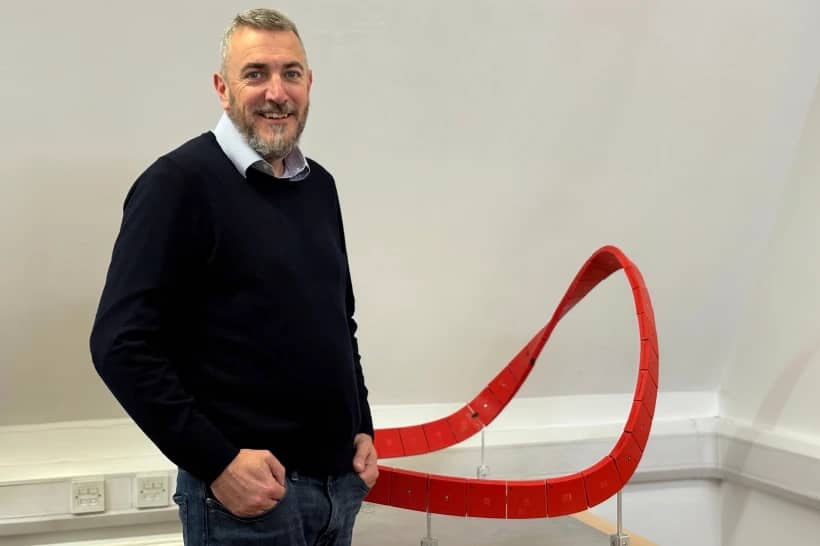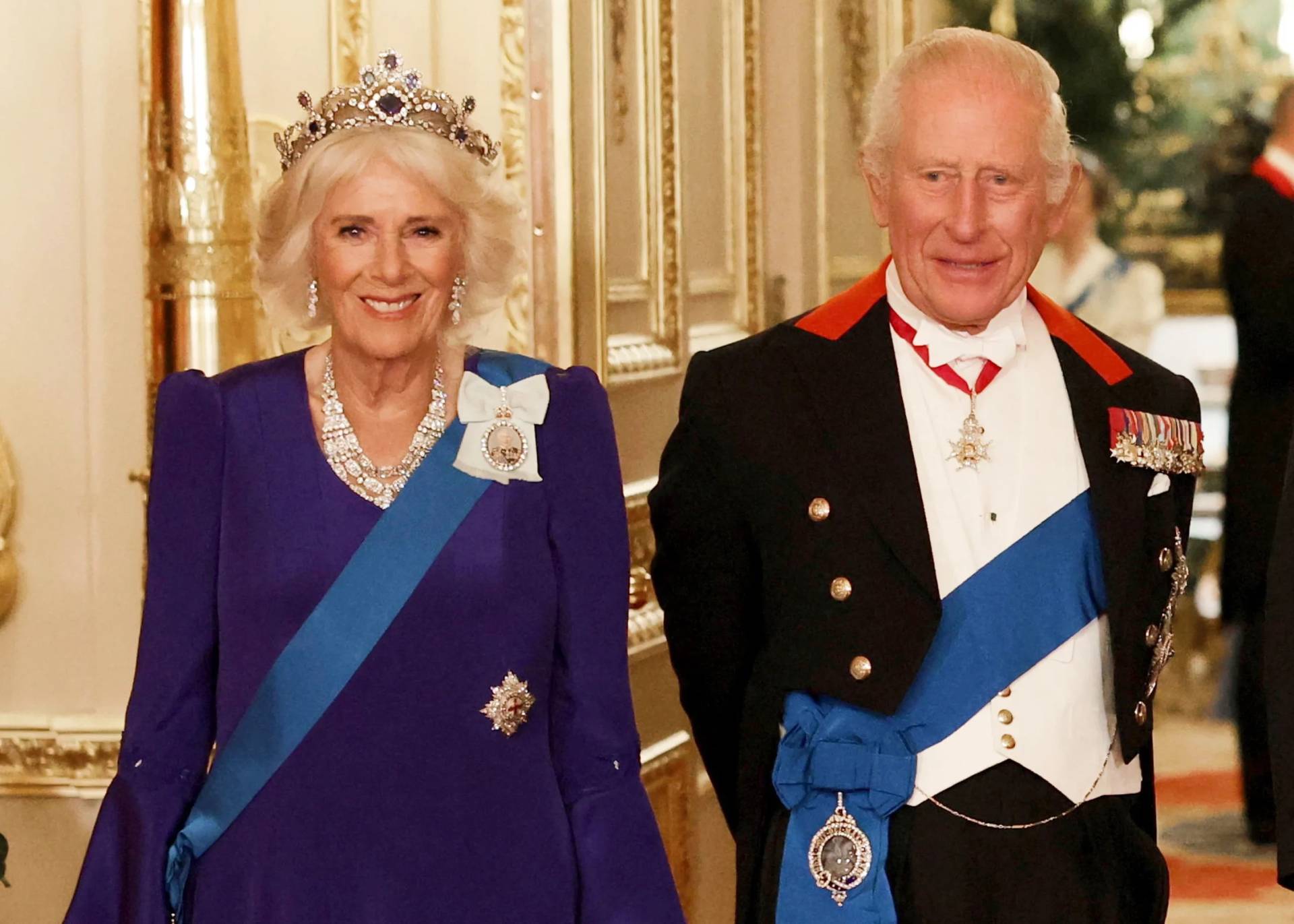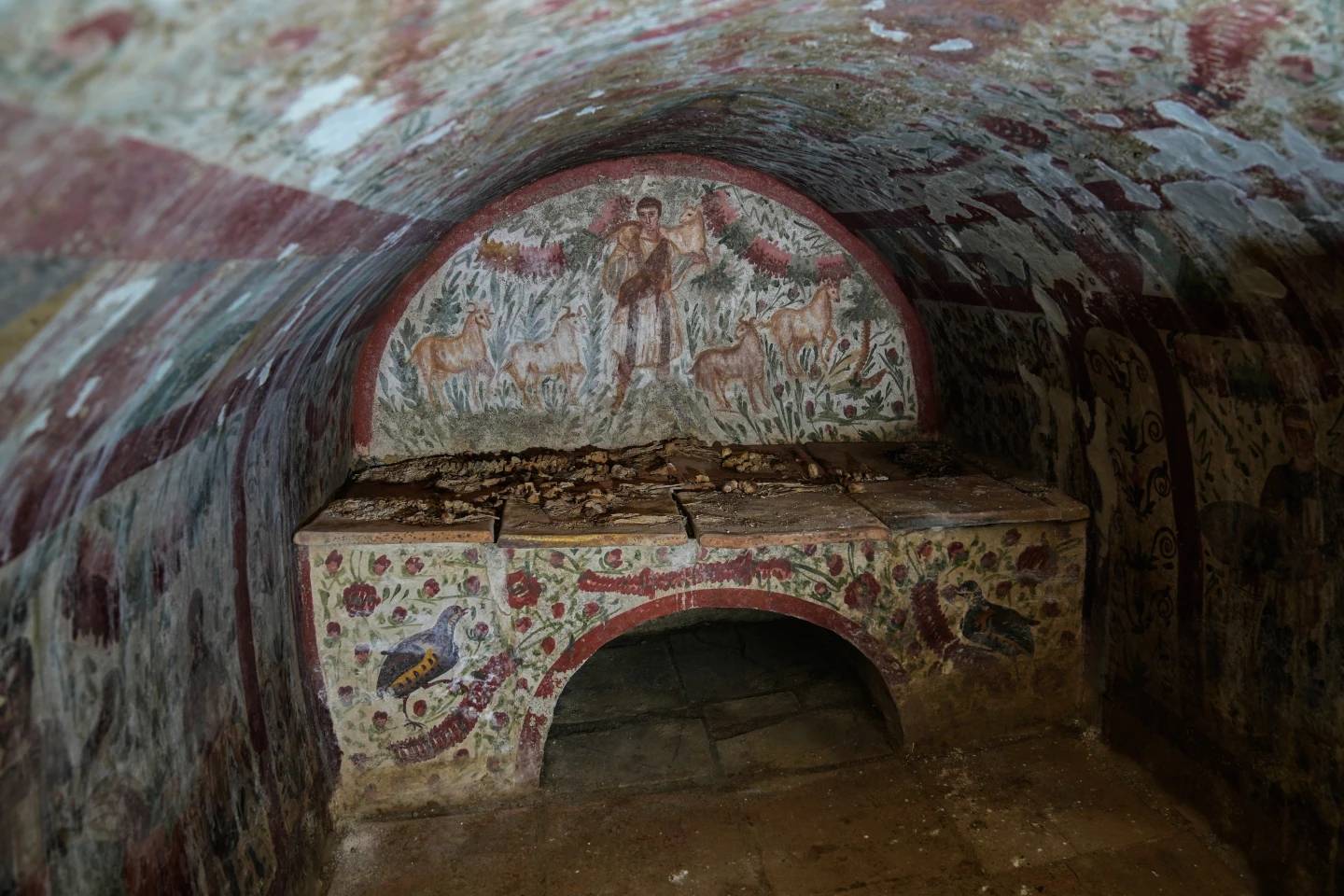LEICESTER, United Kingdom – Kevin Duckett was near a pond close to the English town of Market Harborough with his metal detector when it began to buzz like mad.
It was 2017, and the landowner had only recently allowed the use of metal detectors on his property, which was near the site of a pivotal battle in England’s Civil War.
“I spent a long time uncovering that clod of soil, I really savored the moment. But when I eventually did uncover it, to see his little face looking back up at me was quite astonishing,” Duckett told Crux.

The “little face” he was talking about was on a small 24 carat gold enameled figurine, just under 1½ inches tall.
“I knew it was very old, but I had no idea what it was,” Duckett said. Trying to figure out the mystery of the figurine became a labor of love for the treasure hunter.
“Day in day out I’ve worked away at it,” he said.
Duckett restores classic cars and motorbikes for a living but has been a passionate treasure hunter for over three decades.
In 2012, he found a 13th century gold and sapphire ring that was featured in the British national press.
But the 2017 find fascinated him.
He started trawling through royal inventories to try to establish who made it. Over more than three years, he sent hundreds of emails to historians and other experts to find answers.
One thing Duckett discovered was that the “little face” probably belonged to Henry VI, who ruled England from 1422-1461 and briefly again from 1470-1471.
“I began researching Henry VI and realized, it was made during Henry VIII’s period in the first half of the 16th century,” he said.
“The fixing on the back of the jewel had all of the experts confused as it was unlike any badge,” Duckett said.
He said he realized it might have been made for a royal crown, and then suddenly, “it all made sense.”
“This fitting was identical to other contemporary crown fittings. It is designed to fit through a square hole so that it does not move,” he said.
But which crown?
A replica of the Tudor crown was on display at the Hampton Court Palace in London, and when Duckett visited it in January 2020, the figurines that adorned it were almost identical to the piece that he had found in a field over 100 miles away.

It was the coronation crown of Henry VIII and had originally been adorned with five miniature statues: Three of Christ, one of the Madonna and Child, and one of St. George.
After he broke with Rome, Henry VIII had the three images of Christ removed and replaced with three royal saints to emphasize the king’s role as head of the Church of England. These miniature figures were St. Edmund, St. Edward the Confessor, and Henry VI – who was promoted as a saint and martyr by the Tudors until the end of the 16th century.
“The very thought that Henry VIII used to wear this figure in his crown on his head over 500 years ago when he was the most powerful man in the land is just mind-blowing,” Duckett told Crux.
“I found out that he had three jewels specially made to be added to the state crown because of the Reformation as he split from the Catholic Church … Henry wanted everyone to know that he was more powerful than the Church,” he said.
“I can still hardly believe that I have found this magnificent royal piece in a humble farmer’s field near Market Harborough,” he added.
Which is the second mystery of the treasure hunter’s discovery.
Market Harborough – on the southern tip of the county of Leicestershire and about 18 miles from the city of Leicester – was where the army of Charles I spent the night before the Battle of Naseby on June 14, 1645.

1631 (Credit: National Portrait gallery.)
Charles was known to still have the Tudor crown, and a 1631 royal portrait by Daniel Mytens features it.
Charles and his Cavalier supporters lost to the Parliamentarian forces – popularly known as “Roundheads” – leading to the king’s eventual execution and the 5-year rule of Oliver Cromwell before the monarchy was restored under his son Charles II.
Historian Leanda de Lisle, an expert on Charles I, said the crown could have been part of the royal treasure taken with the king, and the miniature sculptures could have been removed before the crown was eventually melted down.
“It was found near the flight path of the Battle of Naseby where Charles I was defeated by Roundhead forces and this piece could have got lost in the chaos of the aftermath of the battle,” she told ITV News.
However, Mike Ingram – a local historian who heads the Naseby Battlefield Project –says it is “highly unlikely” there is a connection between the figurine and the decisive battle of the English Civil War.
“It is unlikely Charles came this way in the rout. His path would have been blocked by Parliamentarian cavalry and dragoons (according to) contemporary accounts of the battle,” he told Crux.
“Charles probably crossed the river to the west of Market Harborough, possibly at or near Lubenham. The find, impressive as it is, is on the main route north from Northampton travelled by many, including kings from John onwards including Henry VI, VII and VIII,” Ingram added.
Duckett is not convinced by Ingram’s theory.
“Charles rode past the pond on his way to battle and the baggage that belonged to Charles was looted so items including the jewel could of gone anywhere,” he told Crux. “How can anybody dream of saying it is unlikely that Charles lost it at the battlefield when it was found in the battlefield area?”
The historical record shows that Cromwell’s forces sold off the jewels from the crown, and melted the gold.
“There may be a thousand reasons why the gold figure of Henry VI ended up in a Northamptonshire field,” historian and Charles I expert Leanda de Lisle writes on her website.
“But it is striking that the find site is exactly on the route Charles fled from the battle of Naseby in 1645, and in a place that saw extreme violence. At one point Charles had to break through a group of Oliver Cromwell’s cavalry to escape,” she explains.
While its past is debated, the figurine will be kept at the British Museum in London until its future is decided. Under British law, any treasure found must be evaluated by an independent commission, and offered for sale to a museum at the price set by the body.
“As required by the Treasure process the British Museum expert has examined the piece and identified it as dating from the late Middle Ages. It is a gold enameled figure showing Henry VI as a saint and appears to have been used as a badge, or attached by means of the loop on its reverse, to another object,” a spokesperson for the British Museum said in a statement.
As for Duckett, he has set up a Facebook page about the figurine, and will continue to see what he can find with his metal detector.
“It’s been very hard work and this one long labor of love hasn’t been without its stresses,” he told Crux.
“But treasure hunting is in my blood and finding treasure doesn’t come any better than this.”

















